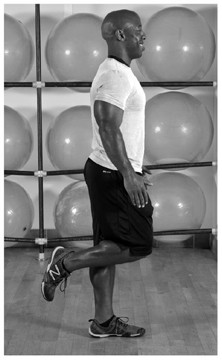Balance training seems to prevent falls, injuries in seniors
Most people take balance for granted. They navigate without thinking, effort, or fear. For millions of others, though, poor balance is a problem. Some struggle with long-term dizziness or imbalance. Others suffer balance-related falls and injuries. A new study concludes that exercise can reduce not only the odds of falling but the odds of sustaining fall-related injuries.
French researchers analyzed the results of 17 trials that tested the effect of fall-prevention exercises on seniors’ risk of falls and fall-related injuries. Overall, exercise programs reduced falls that caused injuries by 37%, falls leading to serious injuries by 43%, and broken bones by 61%. The report was published online in the BMJ.
Some of the exercise programs were specifically aimed at improving balance. Others were general exercise programs. Two focused on tai chi.
Balance and injury
When a toddler or child falls, he or she usually shakes it off and keeps moving. But when an older adult falls, there are often consequences. Broken bones limit mobility. They can also lead to a downward health spiral. Each year, thousands of older Americans die as a result of breaking a hip. Broken bones and head injuries can knock confidence, engender a fear of falling, and undermine independence.
We’ve known for some time that structured exercise with balance training helps reduce falls, and assumed that such programs would also help prevent fall-related injuries. The BMJ report supports that assumption.
Although balance training is the mainstay of fall prevention programs, any exercise that improves endurance, muscle strength and flexibility can help prevent falls and related injuries.
Beyond better balance, the other benefits of multi-component exercise programs include:
- Faster reaction time. This can help you keep yourself upright if you start to fall by putting out an arm quickly to grab something stable.
- Improved coordination. This can directly help prevent falls but can also help you roll rather than crash as you go down.
- More muscle. Stronger and larger muscles can buffer the impact of a fall, providing some protection to bones and joints.
- Stronger bones. Resistance exercises strengthen bones, and stronger bones are more resistant to fractures.
- Better brain function. Regular exercise helps maintain brain function with age. Clearer thinking may help you avoid situations that increase fall risk.
Improving balance
In many urban areas, there’s no shortage of classes aimed at improving balance. You can find them at senior centers, Y’s and Jewish Community Centers, health clubs, and the like. There’s also a lot you can do at home. The AmericanCollege of Sports Medicine Standing recommends standing with one foot in front of another, lifting a foot off the floor, and shifting weight in various directions as three examples of home exercises.
Here’s one from Better Balance, a Special Health Report from HarvardMedicalSchool:
Single-leg stance
-
Stand up straight with your feet together and weight evenly distributed on both feet. Put your arms at your sides.
-
Lift your right foot a few inches off the floor, bending that knee slightly, and balance on your left leg. Hold this position for as long as you can. Five seconds is a good start; aim for 30 seconds.
-
Lower your foot to the starting position.
-
Repeat with your left leg. This completes one rep.
-
If you can, repeat once or twice more.
As you do this exercise, focus on a spot straight ahead. Try to maintain good posture throughout by keeping your chest lifted, your shoulders down and back, and your abdominal muscles braced. And breathe comfortably.
If this exercise is too hard, hold onto a chair or counter for support. If it’s too easy, hold the leg lift for 60 seconds, or do it with your eyes closed.
Efforts to prevent falls are best started early in life rather than late in life. Even so, you are never too old or too frail to exercise. There are always routines that can fit your needs.
About the Author

Howard E. LeWine, MD, Chief Medical Editor, Harvard Health Publishing; Editorial Advisory Board Member, Harvard Health Publishing
Disclaimer:
As a service to our readers, Harvard Health Publishing provides access to our library of archived content. Please note the date of last review or update on all articles.
No content on this site, regardless of date, should ever be used as a substitute for direct medical advice from your doctor or other qualified clinician.















